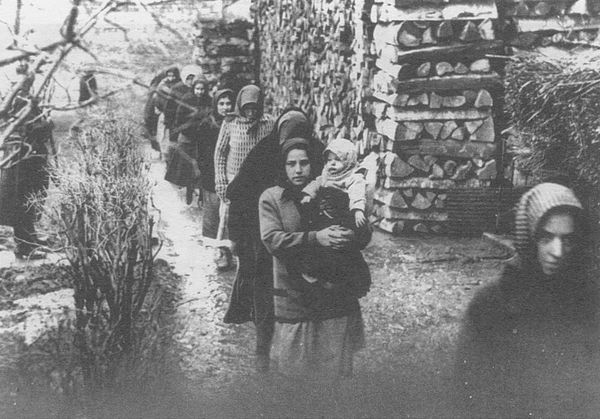A small village in central Hungary called Nagyrev was visited by a strange woman in 1911. Presenting herself as a midwife, the woman went to work in the village. She was married, but her husband didn’t accompany her, nor did he ever appear in Nagyrev. The woman never properly explained his absence.
She went by the name of Júlia Fazekas; however, it seems that she borrowed the name of her absent husband, Julius. The question of her real identity, as well as her past, remain a mystery to this day.
Fazekas earned a reputation for performing abortions, conducting operations on pregnant women despite the fact that the procedure wasn’t legal at the time. She was summoned to court and imprisoned 10 times for her actions, but was always acquitted by judges who turned a blind eye, due to the dire financial situation in the rural areas of Austro-Hungary, just a few years prior to the First World War.
Unwanted pregnancy didn’t fit into to the Hungarian custom of arranged marriages, and divorce was not allowed among the traditionally Catholic population. It has to be said that, although a lot of arranged marriages led to a comfortable and happy domestic life, there were cases in which a husband was in some way abusive, and the wife had to endure it.
When the war came, in 1914, most of the men from Nagyrev were drafted. The Tiszazug region, which included the small village, was used to house Allied prisoners of war (POWs) who were allowed to visit the villages and have contact with the locals. A fair number of married women developed love affairs with the POWs while the local men were away fighting the war.
The first mysterious death that shook the peaceful village was that of another woman who set up as a midwife in the village, whom Fazekas saw as her rival. The story goes that Fazekas became the lover to her rival’s brother, then one day soon after … the woman died. The woman’s son was convinced that Fazekas was responsible. Unable to prove it, he attempted to shoot her, but he missed. The son received a long prison sentence.
It seems that these events gave Fazekas another money-making idea. Together with her accomplice, Zsuzsanna Oláh, she began distributing arsenic, which could be disguised in food, drink, or medicine of the victim. The poison was extracted from fly papers by boiling, and sold at a price that varied according to the wealth of her “clients.”
Keen to exploit the village women, Fazekas encouraged them to kill their husbands, and therefore free themselves from a difficult situation when they returned home and became displeased with their wives’ affairs. Before long, other family members joined the hit list. Between 1914 and 1929, allegedly 300 people fell victims to poisoning, even though Bela Bodo, a historian, claims that the numbers are much lower―between 45 and 50.

The reason why the numbers remain unclear to this day is related to Fazekas’s cousin being in charge of filing death certificates in the village. Indeed, he was a perfect accomplice to make sure the murders went unnoticed for 15 years.
Arsenic poisoning could certainly look as though the cause of death was natural, because it left no physical traces in the victim, and it was impossible to determine anything without an autopsy.
Fazekas used her authority as a midwife to develop a cult-like status among her “followers,” who kept silent about the mysterious deaths and disappearances of their family members. Some poisoned their parents, others their lovers, while some even poisoned their children for various reasons.
Soon, the poisoning became sort of a fad among the women of Nagyrev. Many people used arsenic to hasten the death of elderly family members for inheritance, or to simply rid themselves of the obligation of caretaking.
Allegedly, Fazekas justified the service to her clients rather bluntly: Why put up with them?
Even though the unsolved deaths were ignored by the authorities, Nagyrev was dubbed by people as the Murder District, for death was the only thing the small village was known for.
In 1929, Julia Fazekas, the ringleader of the Angelmakers of Nagyrev, as the group of more than 50 women involved in poisoning crimes was later nicknamed, committed suicide once she was discovered.
There are three different accounts on how exactly the murder syndicate came to the attention of the authorities.
The first one states that Mrs. Szabó, one of the Angelmakers, was caught by two survivors who somehow managed to survive the poisoning. She then pointed to her accomplice, a certain Mrs. Bukenoveski, in order to reduce her own sentence, and that woman led them to Julia Fazekas.
The second account involves a rather curious medical student who actually bothered to conduct an autopsy on one of the victims. He discovered traces of arsenic, which instigated a police investigation.
Bela Bodo, the author of the book The Poisoning Women of Tiszazug, suggested a third, and by some the most plausible scenario―someone sent an anonymous letter to the editor of the local newspaper. The murders were revealed in detail to the general public, and the authorities were pressed to investigate.
Despite the fact that there are discrepancies in all three accounts, the judicial part that came after the capture remains very well documented. The authorities exhumed dozens of corpses of the people who were suspected of being poisoned.
The arrests of 34 women and one man followed. Out of the 35 people detained, 26 women, including Zsuzsanna Olah, were brought to trial. Eight of them received the death penalty, while 12 were sentenced to prison.
The crimes of the Angelmakers have been the subject of many documentaries, articles, and studies. The story itself, due to the veil of mystery that surrounds it, has become a legend in Hungary.
How the circumstances joined together to allow such a mass crime to go unnoticed for more than a decade is also a sort of a testimony of the Austro-Hungarian bureaucracy, whose ineffectiveness and corruption were ridiculed by many, including the famous Czech writer Franz Kafka.
